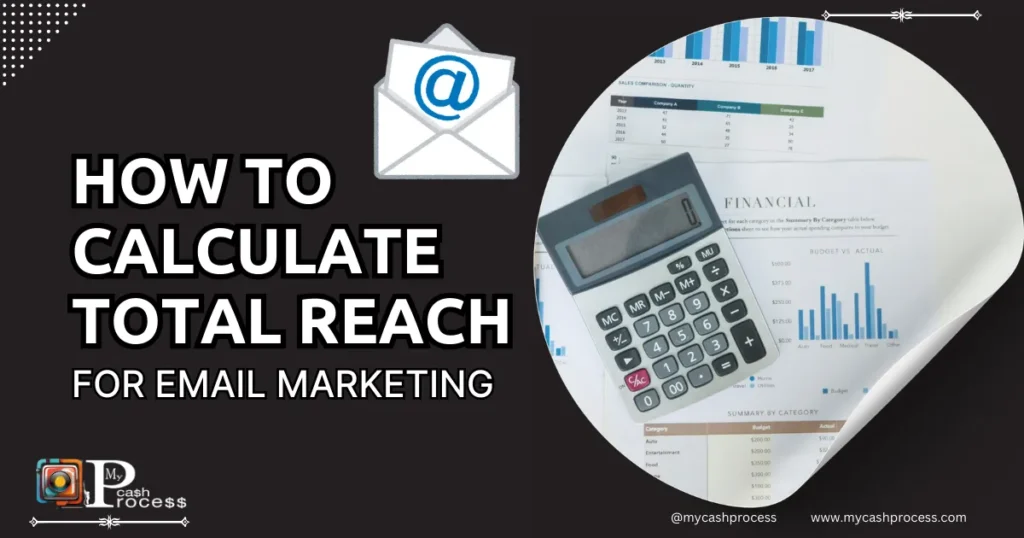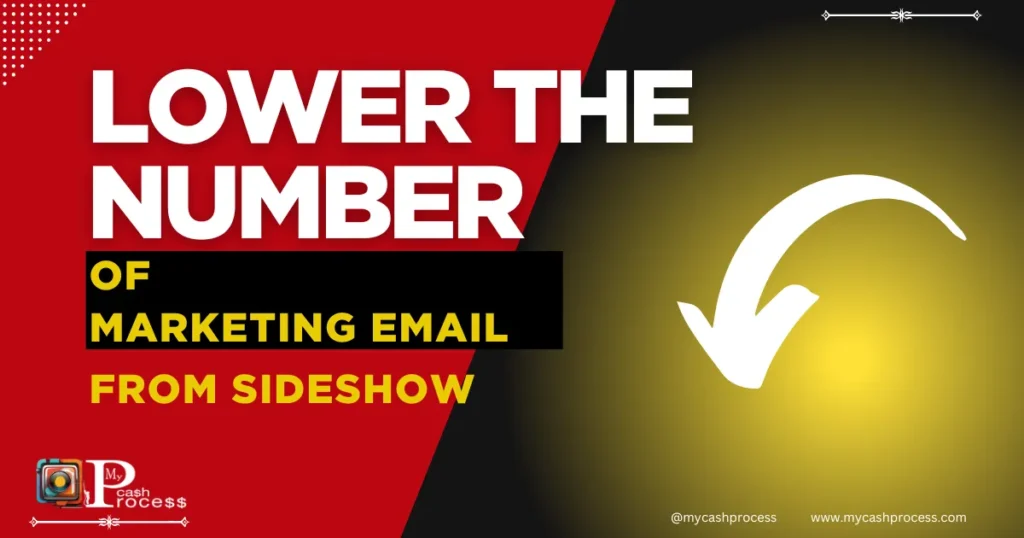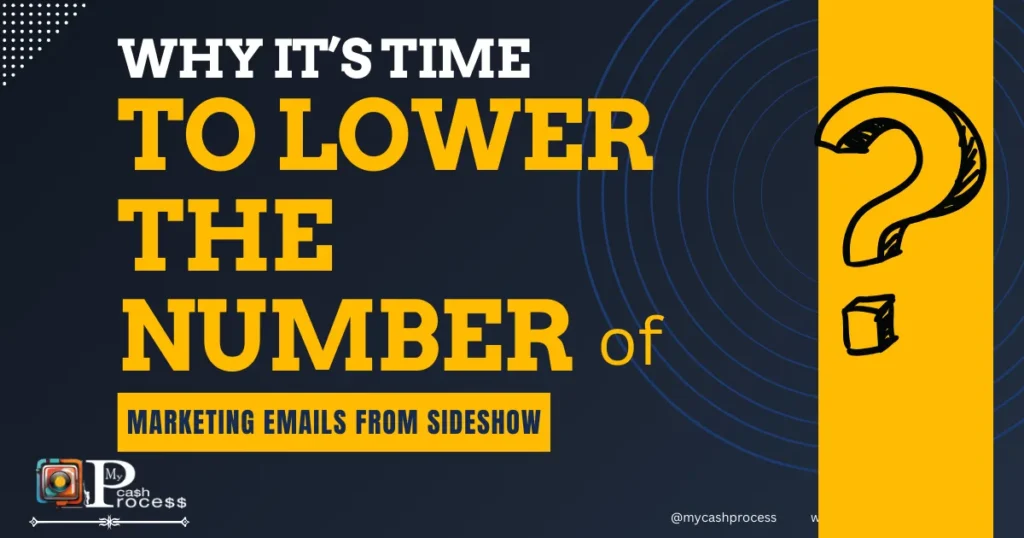Introduction
In today’s competitive digital landscape, understanding the effectiveness of your email marketing campaigns is crucial for business success. One of the most important metrics in email marketing is how to calculate total reach for email marketing. Total reach reflects the scope and impact of your campaigns, helping you gauge the effectiveness of your strategies and efforts.
When you calculate total reach, you’re determining the extent to which your email messages have reached their intended audience, beyond just the open rates or click-through rates. It allows you to understand how well your email campaigns are resonating with your target audience and how far your message is spreading.
In this article, we will explore the importance of how to calculate total reach for email marketing, explain the key metrics involved, and provide actionable insights to optimize your campaigns. Whether you’re new to email marketing or a seasoned pro, understanding and calculating total reach will unlock your campaign’s full potential. Let’s dive deeper into the calculation and its impact on campaign success.
Quick Access Guide
Understanding the Importance of Calculating Total Reach for Email Marketing
Calculating how to calculate total reach for email marketing is essential for assessing the effectiveness of your campaigns. By understanding how to calculate total reach for email marketing, marketers can identify how many unique individuals are engaging with their content. This provides insights that help improve strategy, segment audiences more effectively, and refine messaging.
Knowing how to calculate total reach for email marketing helps you gauge the true impact of your campaign beyond just open rates and click-through rates. It’s an all-encompassing metric that gives a broader view of engagement. For example, calculating how to calculate total reach for email marketing allows you to measure how many people see your emails, even if they don’t take immediate action.
By mastering the process of how to calculate total reach for email marketing, you can increase your reach, boost conversions, and grow your email marketing efforts more effectively.
How to Calculate Total Reach for Email Marketing: The Basics
Definition of Total Reach in Email Marketing
Total reach in email marketing refers to the number of unique individuals who received your email messages, regardless of whether they opened or interacted with the content. It’s a more comprehensive metric than open rates, as it considers the entire scope of your email distribution.
For example, if you send an email to 5,000 people, and 4,000 of those individuals are unique recipients (excluding duplicates or spam traps), your total reach would be 4,000. It’s important to note that total reach email marketing can be influenced by a variety of factors, including list quality, segmentation, and deliverability.
Key Metrics to Consider in Calculating Reach
Several important metrics help determine your total reach in email marketing. Here are a few key metrics to keep in mind when calculating total reach:
- List Size: The number of recipients in your email list directly impacts total reach. A larger, well-targeted list typically results in greater reach.
- Deliverability Rate: Emails that don’t land in inboxes due to spam filters, incorrect addresses, or other issues will not contribute to total reach. Tracking deliverability is essential.
- Unique Opens: This metric measures how many unique individuals opened your email, contributing to the total reach.
- Bounce Rate: Hard bounces (invalid email addresses) can affect the total reach, as these addresses won’t contribute to the reach calculation.
When calculating total reach, it is essential to track these metrics and understand how they impact the overall effectiveness of your email campaigns.
How to Collect Data from Your Campaigns
To calculate your total reach for email marketing, you’ll need access to several data points from your email marketing platform or analytics tools. Here’s how to collect the necessary data:
- Email Campaign Reports: Most email platforms, such as Mailchimp, SendGrid, and HubSpot, offer detailed reports that include metrics like delivery rates, open rates, and unique opens. You can use these reports to calculate the total reach.
- Tracking Pixels: Many email marketing platforms use tracking pixels to monitor how recipients interact with your emails. These pixels track data such as unique opens and user engagement, which can help in calculating total reach.
- Subscriber Lists: Your subscriber lists will provide insights into the number of unique contacts receiving your emails. You can compare this list against bounce rates to get a more accurate reach.
Once you gather all of this data, you can use the relevant formulas and calculations to determine your total reach, ensuring you’re measuring the impact of your campaigns accurately.
Understanding Total Reach vs. Other Email Marketing Metrics
Difference Between Reach and Open Rates
The terms reach and open rate are often used interchangeably, but they represent distinct aspects of your email marketing campaign’s performance. Understanding the difference between them is crucial for calculating your total reach effectively.
- Open Rates: This metric shows how many recipients opened your email. While it is valuable for understanding engagement, it does not consider people who received the email but did not open it. Open rates are calculated by dividing the number of unique opens by the number of emails sent.
- Total Reach: Unlike open rates, total reach email marketing accounts for all unique recipients who received the email, regardless of whether they opened it. This makes total reach a more comprehensive measure of your campaign’s scope.
Why Total Reach Is More Comprehensive
While open rates can provide insights into engagement, they don’t tell the full story. You might have a high open rate, but that doesn’t necessarily mean your email is reaching as many unique individuals as possible.
Total reach offers a broader view of your campaign’s success. By calculating how to calculate total reach for email marketing, you can get a clear picture of how many unique individuals were exposed to your message. A higher total reach indicates that your email list is robust and your campaigns are effective in reaching the target audience.
Examples Email Marketing Gifs to Highlight Key Differences
To illustrate the difference between open rates and total reach, imagine an email marketing campaign where 5,000 people receive your email. If 3,500 people open it, the open rate is 70%. However, if there were only 4,000 unique recipients (excluding duplicates or errors), your total reach would be 4,000. In this case, your total reach is more important than the open rate, as it accounts for all individuals who received your message.
By understanding the difference between these two metrics, you can make more informed decisions about your email marketing strategies.
The Formula for Calculating Total Reach in Email Marketing
Step-by-Step Breakdown of the Calculation
Calculating how to calculate total reach for email marketing involves determining the number of unique recipients who received your email. Here’s a simple formula to calculate it:Total Reach=Total Recipients−Duplicate or Invalid Email Addresses\text{Total Reach} = \text{Total Recipients} – \text{Duplicate or Invalid Email Addresses}Total Reach=Total Recipients−Duplicate or Invalid Email Addresses
To calculate this accurately, follow these steps:
- Count the total number of email recipients: This is the initial number of people you sent your email to, which should be available through your email platform.
- Account for bounce rates: Subtract the number of bounced emails (both soft and hard bounces) from the total recipients.
- Exclude duplicates: Remove any duplicate email addresses from the list to ensure each person is counted only once.
- Factor in spam traps and invalid addresses: Remove any known spam traps or invalid email addresses to get an accurate count.
By following this process, you can calculate your total reach with a higher degree of accuracy.
Tools and Platforms to Assist with Calculations
To make the process of calculating total reach easier and more efficient, you can leverage various tools and platforms:
- Email Marketing Software: Platforms like Mailchimp, ActiveCampaign, and Campaign Monitor offer built-in tools for tracking reach, open rates, and bounce rates. These tools can automatically generate reports that allow you to calculate total reach.
- Google Analytics: While not specifically designed for email marketing, Google Analytics can provide insights into how email recipients interact with your website, which can be used in conjunction with email data to gauge total reach.
- Excel/Spreadsheets: If you prefer a manual approach, using Excel or Google Sheets to track and calculate your total reach can be effective. By importing your data into these programs, you can use formulas to automate the calculation process.
Example of a Simple Calculation
Let’s say you send an email to 10,000 recipients. After reviewing your analytics, you find:
- 200 bounced emails (hard and soft bounces)
- 50 duplicates
- 50 invalid email addresses (spam traps)
Using the formula:Total Reach=10,000−200−50−50=9,700\text{Total Reach} = 10,000 – 200 – 50 – 50 = 9,700Total Reach=10,000−200−50−50=9,700
In this case, your total reach would be 9,700 unique individuals.
Factors That Affect Total Reach in Email Marketing
Several factors can influence the total reach email marketing of your campaign. These factors not only affect how many people receive your emails but also determine how well those emails perform. Understanding these variables allows you to optimize your strategy to improve your reach.
List Quality and Segmentation
The quality of your email list plays a significant role in determining your total reach. A high-quality list, consisting of individuals who have opted in to receive your content, is essential for maximizing total reach. Segmentation, the process of categorizing your audience based on specific criteria (such as demographics, interests, or behavior), further boosts the effectiveness of your campaigns.
By segmenting your list and targeting the right recipients with personalized content, you can ensure higher engagement rates and a broader reach. A segmented list helps in sending relevant emails to the right audience, reducing bounce rates and increasing the chances of your message reaching its intended recipients.
Key Segmentation Strategies:
- Demographics: Age, gender, location, and other demographic factors.
- Behavioral Data: Previous interactions with your brand, like email opens, clicks, or website visits.
- Engagement Levels: Segmenting based on active vs. inactive subscribers helps send targeted content.
Email Deliverability and Bounce Rates
Email deliverability refers to the ability of your emails to reach recipients’ inboxes. Low deliverability can significantly affect your total reach email marketing. A variety of factors, such as spam filters, poor sender reputation, or content issues, can cause emails to end up in the spam folder or not be delivered at all.
In addition to deliverability, bounce rates also impact reach. Hard bounces (invalid email addresses) or soft bounces (temporary issues, like a full inbox) reduce the number of people who actually receive your emails. Keeping your list clean by regularly removing invalid addresses and ensuring high deliverability is crucial for maintaining a high total reach.
Examples email Marketing Gifs That Showcase Reach Variability
To illustrate the effects of poor list quality or deliverability on total reach, consider an example where you send an email to 10,000 people, but only 7,500 actually receive it due to issues like invalid email addresses or spam filtering. By fixing deliverability issues and improving your list quality, you can boost that reach to 10,000, maximizing the potential of your campaigns.
Tools and Software to Calculate Total Reach in Email Marketing
Understanding how to calculate total reach for email marketing is made easier with the help of various tools and platforms. These tools provide detailed metrics and analytics, helping you track your campaign’s performance in real-time.
Overview of Email Marketing Platforms with Reach Tracking Features
Most modern email marketing platforms offer robust tools to measure total reach. These tools track key metrics such as bounce rates, open rates, click-through rates, and unique recipients. Here are some platforms that can help you track and calculate total reach:
- Mailchimp: Offers a comprehensive reporting suite that includes metrics like total reach, open rates, bounce rates, and more. Mailchimp’s reporting tools are user-friendly, making it easy to see how your campaign is performing.
- HubSpot: Known for its marketing automation features, HubSpot tracks email delivery, opens, bounces, and more. The platform also helps you manage your subscriber list and segment your audience effectively.
- Campaign Monitor: Provides detailed analytics, including total reach, open rates, click-through rates, and more. It also offers customizable reports, so you can track specific metrics important for your campaigns.
Benefits of Using Automation Tools for Accurate Reach Data
Using automation tools can significantly improve the accuracy of your total reach calculations. These tools can automatically segment your list, track email opens and bounces, and even identify invalid email addresses. Automated email marketing platforms also ensure that your emails are sent at optimal times, improving deliverability and increasing the chances of reaching a broader audience.
Pros of Using Automation Tools:
- Improved Accuracy: Automated tracking eliminates human error.
- Time Efficiency: Saves time by automating list management and reporting.
- Real-time Analytics: Allows you to monitor total reach in real-time for immediate adjustments.
Examples Email Marketing Gifs of Popular Email Marketing Tools
To better understand how these platforms work, consider a scenario where you use Mailchimp to track your total reach. A tracking gif could demonstrate how Mailchimp’s reporting interface breaks down your total reach and highlights key metrics like bounces and opens. This visualization makes it easier to understand how the platform tracks total reach and how to use that data to improve future campaigns.

Case Study: Successful Campaigns and Their Total Reach
To better illustrate the concept of how to calculate total reach for email marketing, let’s look at a real-life case study. This will provide insights into how total reach can impact the success of an email campaign.
Breakdown of a Real-Life Email Marketing Campaign’s Total Reach
Consider an e-commerce brand that sends out an email campaign promoting a limited-time sale. The campaign was sent to 15,000 recipients, and the total reach for this campaign was 12,500, with a bounce rate of 3% (450 bounced emails). The campaign’s total reach was calculated as:Total Reach=15,000−450=14,550\text{Total Reach} = 15,000 – 450 = 14,550Total Reach=15,000−450=14,550
However, the number of actual recipients who interacted with the content (opened or clicked the email) was 9,000, resulting in an engagement rate of 60%. The campaign’s success was measured not only by engagement but by the fact that the total reach was much larger than the unique interactions.
How Total Reach Impacted the Campaign’s Success
The high total reach helped the e-commerce brand expand its audience base and create awareness about the sale. Even though the open rate was lower, the broad reach allowed the brand to expose the offer to a wide range of potential customers. This resulted in increased traffic to their website and a boost in sales, demonstrating the importance of calculating and optimizing total reach.
Key Takeaways from Successful Campaigns
- Reach is critical for brand visibility: The broader your reach, the more people are exposed to your message.
- Engagement is secondary: While engagement metrics like open rates matter, total reach helps expand your audience.
- Focus on list quality: A well-segmented list improves total reach and engagement.
Common Mistakes When Calculating Total Reach for Email Marketing
Accurately calculating total reach email marketing can be challenging, and many marketers make common mistakes that can distort the data. Avoiding these pitfalls ensures that you measure your campaign’s performance effectively.
Underestimating the Importance of Data Accuracy
One of the most common mistakes is failing to account for invalid email addresses, duplicates, or soft bounces. Ignoring these can lead to inflated reach numbers, which can mislead campaign decisions. It’s important to clean your email list regularly to avoid these issues.
Ignoring Certain Factors Like Bounce Rates and Unsubscribes
Another mistake is overlooking bounce rates and unsubscribes. These factors can significantly affect your total reach and should be factored into your calculations. While you may see a high number of emails sent, the actual reach could be far lower due to bounces and unsubscribes.
Examples Email Marketing Gifs of Mistakes to Avoid
Examples email marketing gifs Visualizing common mistakes in email marketing, such as failing to clean your email list or overlooking bounces, can help you understand the potential impact on total reach. A gif showing a campaign with inflated numbers due to ignored bounces can serve as a reminder to double-check your metrics.
Improving Your Total Reach for Email Marketing
To maximize your total reach email marketing, it’s essential to focus on specific strategies that can improve deliverability and engagement.
Tips for Increasing Engagement Rates
- Personalization: Tailor your emails based on recipient behavior, preferences, and demographics.
- Clear Call-to-Actions (CTAs): Make it easy for recipients to take action, whether it’s making a purchase or reading more content.
- A/B Testing: Test different subject lines, email copy, and design elements to optimize engagement.
Best Practices for List Building and Segmentation
- Regular List Hygiene: Clean your list by removing inactive subscribers and correcting invalid emails.
- Segmentation: Create targeted groups based on specific interests or behaviors to increase relevance and engagement.
How to Tailor Your Content for Maximum Reach
- Relevant Content: Send personalized offers or updates based on customer interests.
- Visually Appealing Emails: Use attractive designs, images, and gifs (such as Examples email marketing gifs) to capture attention and drive engagement.
Tracking and Monitoring Total Reach in Real-Time
Effective tracking and monitoring of how to calculate total reach for email marketing is essential for optimizing your campaigns. Analytics tools allow you to track total reach in real-time and adjust your strategies accordingly.
How to Use Analytics Tools for Monitoring Reach
Tools like Google Analytics, Mailchimp, and HubSpot allow you to monitor the reach of your campaigns in real-time. Setting up automatic reports ensures that you stay on top of the data, helping you understand which aspects of your campaigns need improvement.
Setting Up Automated Reports to Track Performance
Automating reporting through your email platform allows you to receive regular updates on how your campaigns are performing. You can set up reports that track total reach, open rates, click-through rates, and bounce rates.
Example of Real-Time Monitoring with Email Marketing Gifs
A gif showing a real-time dashboard of your email campaign’s performance can illustrate how quickly you can track reach and engagement. This visual representation helps show the effectiveness of using automated tools for monitoring and optimizing campaigns.
Conclusion
In conclusion, calculating how to calculate total reach for email marketing is an essential skill for any marketer. By focusing on key factors such as list quality, segmentation, and deliverability, and using the right tools, you can maximize your campaign’s reach. Avoiding common mistakes and using real-time analytics can further enhance your email marketing strategy.
By implementing best practices, continuously testing, and optimizing, you can achieve improved total reach email marketing and drive better results for your brand or business.
Warning
- Common Pitfalls When Measuring Reach:
- Data Inaccuracy: One of the biggest mistakes is relying on inaccurate data, whether it’s due to wrong metrics or poor tracking methods. Ensure that you’re using reliable tools that provide correct reach data.
- Ignoring Bounce Rates and Unsubscribes: Failing to account for bounce rates or unsubscribes can significantly skew your total reach email marketing calculations. Both metrics impact the overall health of your list and the effectiveness of your campaigns.
- Overlooking Segmentation: Without proper segmentation, you might see inflated reach numbers. Generic, untargeted emails often result in lower engagement rates, which affects your true reach.
- Importance of Accurate Data and Reporting:
- The foundation of any successful email marketing campaign is data accuracy. Inaccurate or outdated information can lead to misinterpretations of your total reach email marketing and hinder your optimization efforts.
Follow us on Pinterest, Twitter X, Facebook, Instagram, Quora, TikTok, Discord, YouTube, and WhatsApp Channel.
Advice
- Best Practices for Consistently Improving Reach:
- Focus on List Segmentation: Segmentation is critical for targeted campaigns. By segmenting your email list based on factors like behavior, demographics, and past purchases, you can ensure that you’re sending the right messages to the right people, boosting your total reach.
- Monitor Campaign Performance: Track and analyze every email marketing campaign to measure its reach and optimize for the next one. Use tools like A/B testing to identify what works best for increasing your total reach email marketing.
- Improve Deliverability: Keep your email list clean and monitor deliverability rates. Emails that end up in spam folders won’t contribute to your total reach email marketing, so it’s important to maintain list hygiene and follow best practices for email deliverability.
- Engage Your Audience: High-quality content that resonates with your audience is key to improving engagement rates, which in turn improves your total reach. Use attractive subject lines, personalize content, and make your emails visually appealing.
- Recommendations for Future Email Campaigns:
- Utilize Automation: Automated email sequences help to keep your audience engaged over time, contributing to sustained total reach email marketing.
- Leverage Analytics Tools: Real-time monitoring of your campaigns using analytics platforms ensures that you’re optimizing your reach as you go along. This also allows for swift adjustments if your reach isn’t as expected.
FAQs
What is the difference between reach and open rate?
Reach refers to the total number of individuals who have received your email or seen your message. Open rate, on the other hand, measures how many people actually opened your email. Total reach is a more comprehensive metric that includes those who may not have interacted with the email, while open rate is a subset of reach focusing on engagement.
How can I calculate total reach manually?
To calculate total reach manually, you’ll need to combine the number of email addresses in your list with factors like social media shares, website visits driven by your emails, and any additional platforms or channels through which your email might be seen. The formula is: Total Reach = (Email List Size) + (Social Shares) + (Website Traffic from Emails).
However, for more precise calculations, it’s best to use automated tools and analytics platforms.
What tools should I use to track total reach effectively?
Some of the best tools to track total reach email marketing include:
Mailchimp: Offers detailed tracking for reach and engagement metrics.
Campaign Monitor: Provides comprehensive reports to assess your total reach.
HubSpot: An all-in-one marketing platform with in-depth reach analysis.
Google Analytics: Helps track website traffic resulting from email campaigns.
Sendinblue: A platform that offers email reach tracking and optimization features.




